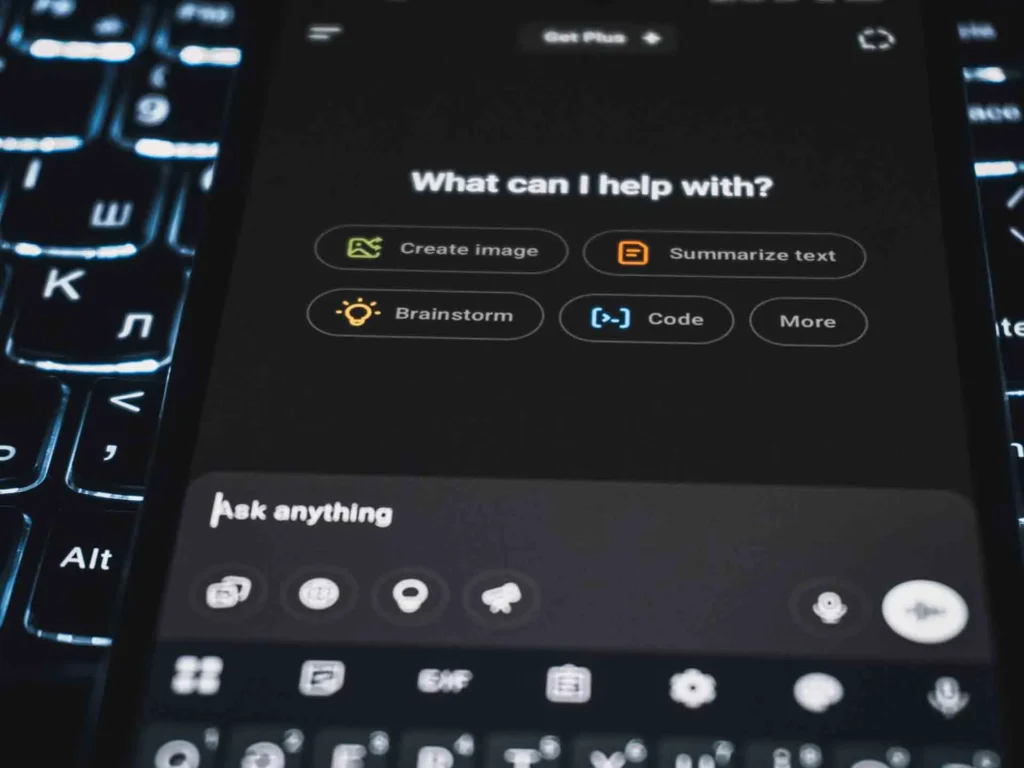Artificial intelligence is here, and while the buzz is palpable everywhere, the real challenge isn’t about the tech. It’s about leadership.
For many, AI for business leaders feels like standing at the edge of something vast and unfamiliar. There’s pressure to act quickly, yet uncertainty about where to begin. The term “AI-first organization” gets tossed around in boardrooms, but what does it really mean?
Below, we get specific. This guide is written for those who want to move beyond hype and start building. If you’re serious about weaving AI into the fabric of your business, not as a gimmick but as a strategy, this is for you.
Step 1: Begin with a Perspective Shift

AI should not live in the realm of “innovation departments” or tech labs. The moment it becomes someone else’s responsibility, you’ve already lost the competitive edge.
AI isn’t just about data. It’s about decision-making. It’s about rethinking how you work, what your customers value, what your growth potential could be, and what your teams need. Business leaders who understand this are already finding ways to increase productivity and personalize services that used to take weeks or months to uncover.
AI isn’t about replacing people but rather increasing their potential. It’s about using AI to free up time, improve processes, reduce noise, and sharpen focus.
Step 2: Identify Real Business Friction
For many, AI for business leaders is jumping into AI, looking for a “cool” use case. That’s a mistake. If AI doesn’t solve a business problem, it’s a science project. And most science projects don’t scale.
Instead, look for friction. Where is your business leaking time or energy? Where are your teams making the same decisions over and over again? Where do you need speed, but can’t get it?
For example, a manufacturing firm can start its AI journey not with predictive analytics or robotics, but by reducing the time spent on vendor contract reviews. Training a model to flag anomalies in standard agreements means that the company can free up its legal team to focus on more strategic work. That move alone can save weeks each quarter.
You don’t need sweeping transformations on day one. You need one clear win. Then build from there.
Step 3: Choose Technology That Serves, Not Stuns
There’s no shortage of AI tools on the market. The mistake many organizations make is trying to force-fit the most advanced tool into a situation that doesn’t require it. Just because a tool is complex doesn’t mean it’s effective for your team.
You want tools that your people will actually use, not ones that require six months of training and a new hire to manage. If your marketing team can use AI to generate customer segmentation insights within their existing CRM, that’s a smart starting point.
There’s no one-size-fits-all stack. What matters is that your technology supports your business objectives and grows with your teams.
Step 4: Invest in Human Fluency
You don’t need everyone in your company to write machine learning models. But you do need people to understand what AI can and cannot do. Fluency matters.
This means providing your team with education that is practical, not theoretical. Your operations manager doesn’t need to understand backpropagation, but they should know how to evaluate AI-generated forecasts. Your head of customer service should know how natural language processing works well enough to understand what an AI-powered chatbot can reasonably handle.
Leadership has a role to play here. When business leaders take part in training sessions, curiosity spreads. When you ask your team how they’d use AI to do their work better, innovation starts.
If AI is going to be central to your strategy, it must be familiar. That familiarity starts with conversation, not coding.
Step 5: Don’t Build Everything from Scratch
It’s easy to get swept up in the idea of building proprietary models or launching an in-house AI lab. In reality, most businesses get better results when they start with existing platforms and customize lightly.
The goal is momentum. Not every company needs its own data scientists, but many may need the right partner and the right platform. They also need a clear idea of what they’re trying to achieve.
Look at industries that are similar to yours. See how they’re using AI effectively. Borrow ideas. Adapt them. Move faster. Over time, you may decide to build internal expertise, but don’t let that delay your first step.
Step 6: Restructure Around Collaboration, Not Automation
The phrase “AI-first” can sometimes mislead. It might sound like an invitation to automate everything and shrink teams. But in high-performing organizations, AI doesn’t replace people. It collaborates with them.
The goal is to eliminate the repetitive, time-draining parts of your workflows. But the judgment, empathy, nuances, and creative problem-solving? That’s still human.
The real shift when it comes to AI for business leaders comes when you design processes with this collaboration in mind. A marketer who uses AI to draft campaign copy should still shape the tone, while a recruiter using AI to screen resumes should still decide who makes it to the interview. When it comes to customer success teams, they should use AI for client health scoring, but should still follow up personally.
This balance builds trust, both inside and outside your company.
Step 7: Establish Responsible Guidelines Early
The more you rely on AI, the more critical governance becomes. Who is responsible when a model makes a bad call? How do you ensure fairness in algorithmic decisions? What data can you ethically collect, and how do you store it?
These aren’t back-burner questions. They are foundational.
Many companies wait until something goes wrong to think about policy. That’s a dangerous move. Instead, draft your principles at the beginning. Make sure every team working with AI knows the limits, so ensure you’re designing for transparency, not just performance.
This isn’t about compliance alone but more about AI for business leaders. Customers want to know how you’re using AI, and so do your employees. Building trust is part of building a modern, resilient business.

Step 8: Track Outcomes, Not Activity
One of the most common mistakes organizations make is measuring their AI progress in terms of “projects launched” or “tools deployed.” That tells you nothing about value.
The better question is: what has changed? Are your marketing campaigns converting more effectively? Are customer support wait times shorter? Are managers making better staffing decisions because of clearer forecasts?
Every AI investment should be tied to a business result. If it’s not driving impact, revisit the strategy. AI should create clarity and speed. If it’s not doing that, something needs to change.
Step 9: Keep Asking New Questions
AI isn’t static. The tools you use today will evolve quickly, and new capabilities will emerge. Old assumptions will get challenged, and some will be lost with time altogether.
That’s why the best AI business leaders don’t treat transformation as a checklist but rather treat it as a habit. Set up a regular rhythm of reflection where you’re revisiting what’s working and making a list to retire what isn’t. Bring new voices into the room, especially from parts of the business that are just starting to explore AI.
Above all, stay curious. That curiosity, rooted in business needs, not tech novelty, is what will keep you agile and effective.
Final Thoughts
Becoming an AI-first organization doesn’t mean you need to automate everything or race toward the latest trend. It means understanding how intelligence, both human and artificial, can work together in the service of better outcomes.
Always listen to your teams, experiment thoughtfully, and construct a culture where new ideas can take root. The truth is, there is no final version of this process, and there is no perfect playbook when it comes to AI for business leaders. Just clear intentions and the willingness and commitment to evolve.
Start where you are. Learn what works. Keep going. The future isn’t waiting. It’s already being shaped by those who are willing to lead with curiosity and build with purpose.
Are you keen to integrate AI into your workplace, sustainably and thoughtfully? Raj Goodman can help.
Contact him today and fortify your business for the future.
Recent Posts
-
October 15, 2025
-
September 17, 2025
-
August 26, 2025






